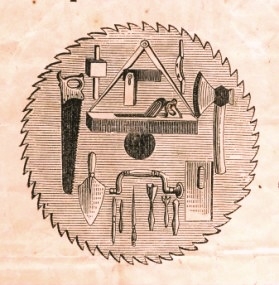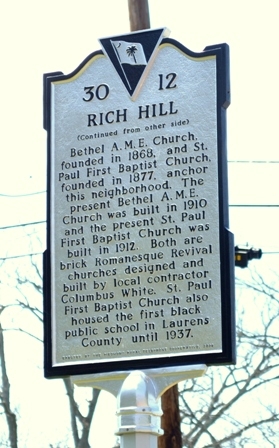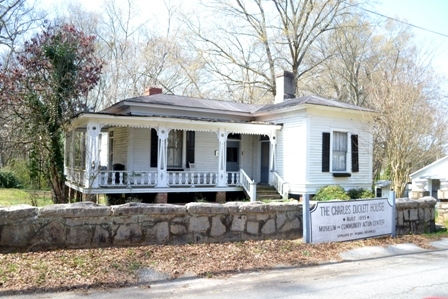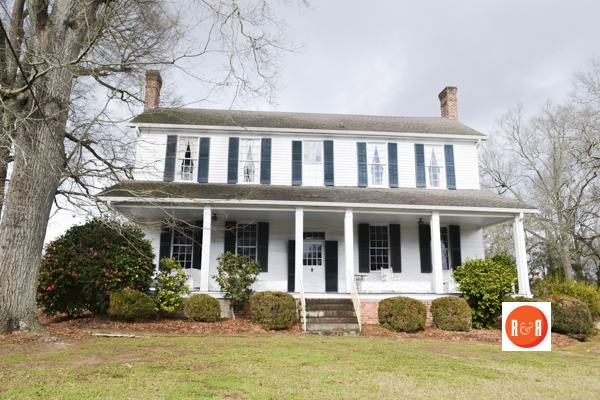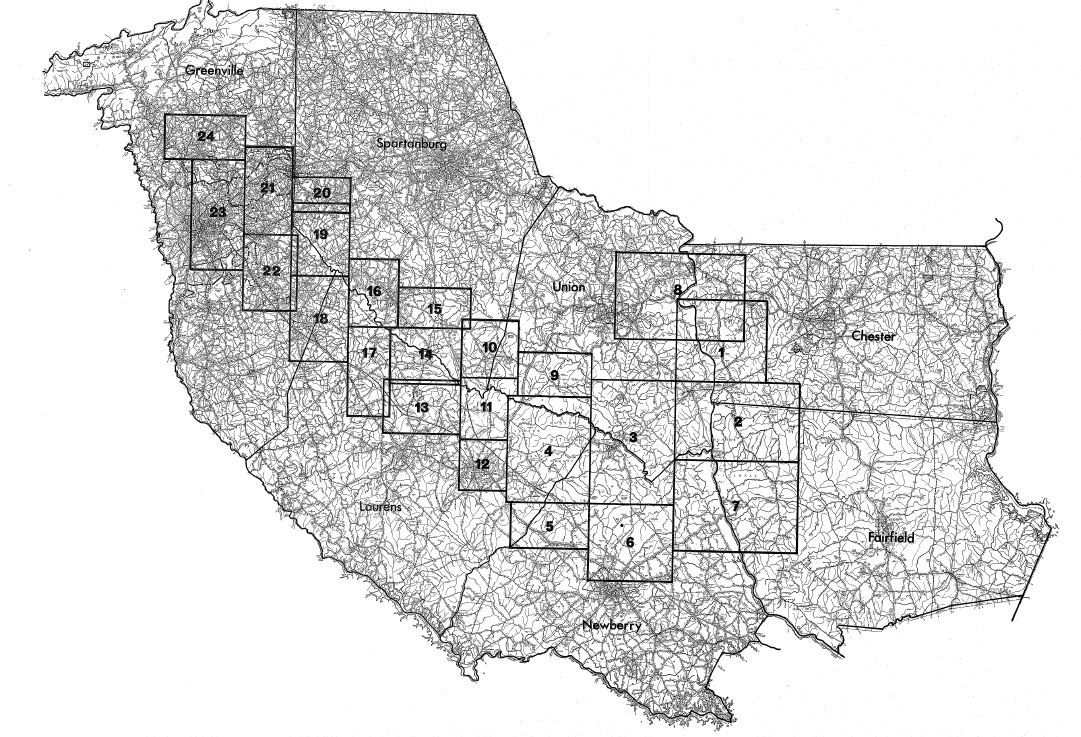
Map showing the areas covered by the Upcountry Land Grant Project. This collection was originally created by the Union County Historical Foundation / Union Co Museum in 1976. Researchers are indebted to Dan E. Collins of Whitmire, S.C. for his extensive knowledge and help in this project. Others who played vital roles are: Robert Mm Duncan and Col. Wm. J. Whitener.
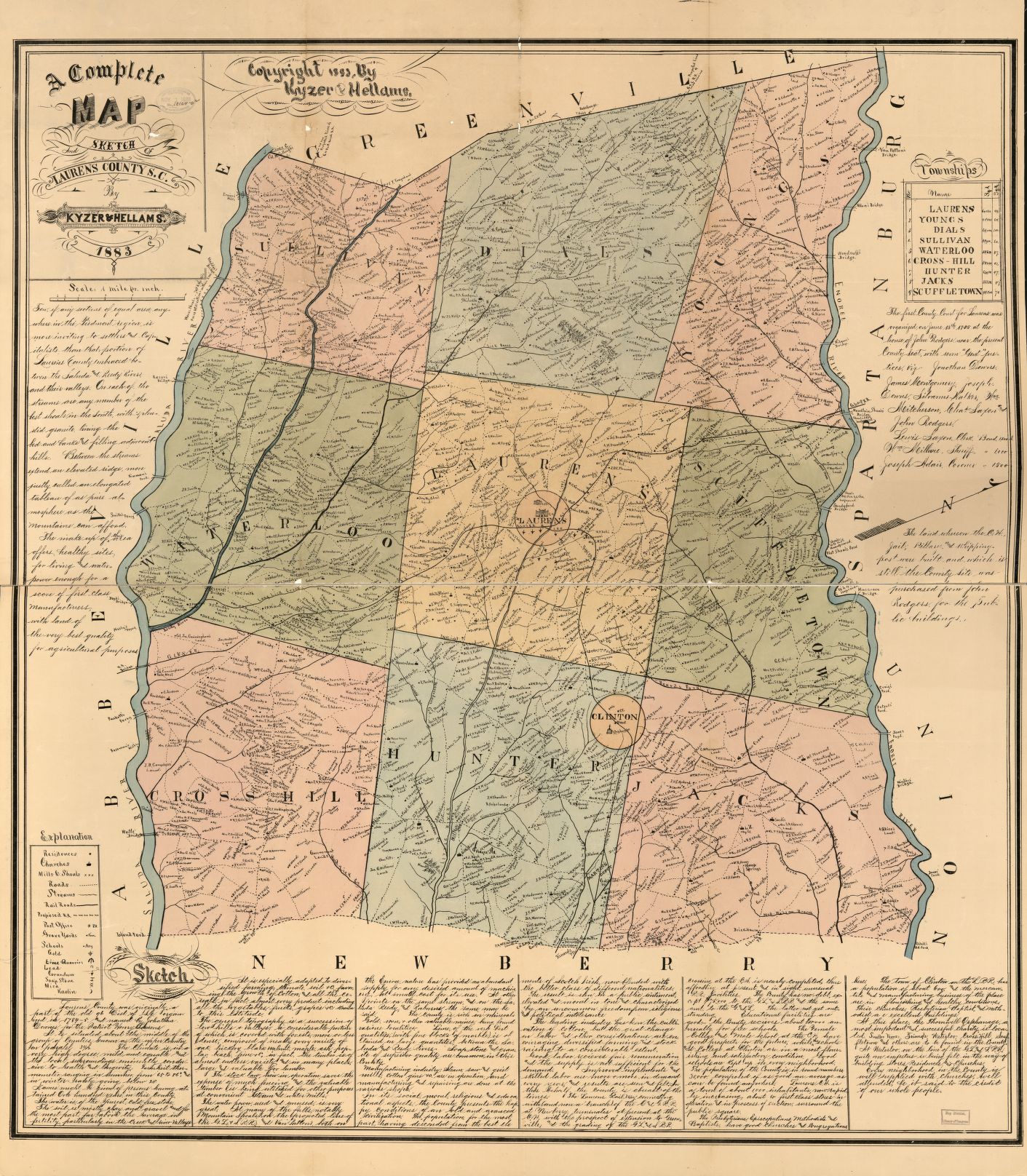
1883 Map of Laurens Co., S.C. showing households and landownership by Kyzer and Hellams, Library of Congress

Early postcard image of a downtown residence. Courtesy of the Martin Postcard Collection – 2014/15

Mr. John Darby the photographer in the early 20th century.


Young’s Township map of 1883. Click on the History Thread icon to access enlargeable map.
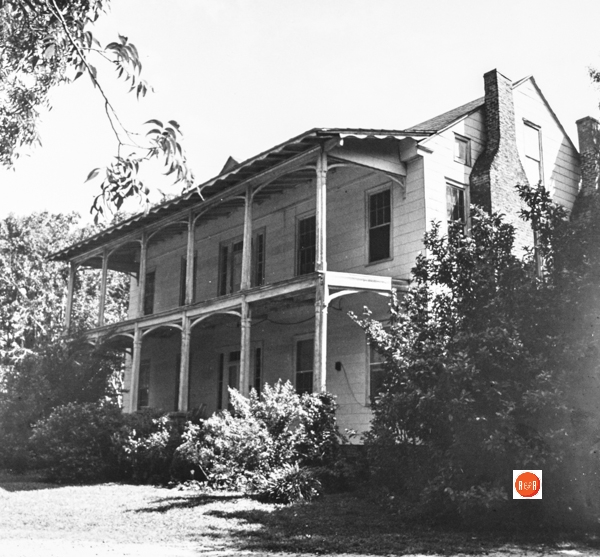
Gothic Revival 1830 – 1860s style in America was advanced by architects Alexander Jackson Davis and especially Andrew Jackson Downing, authors of influential house plan books, Rural Residences (1837), Cottage Residences (1842), and The Architecture of Country Houses (1850). This style was promoted as an appropriate design for rural settings, with its complex and irregular shapes and forms fitting well into the natural landscape. Thus, the Gothic Revival style was often chosen for country homes and houses in rural or small town settings. Penn Arch. Guide Book – Website
Courtesy of the SC Dept. of Archives and History – 1984

Courtesy of the Blythe Collection – 2015


Cross Hill was a recognized antebellum community in Southern Laurens Co., S.C., map ca, 1856.
Image taken by R&R in 2013

The depot was demolished in 1970s.
Clinton began as a gathering place for men of the area who were attracted by the bars, horsetrack, and cockfights. The early name of this area was Five Forks because of the convergence of five roads. Located one mile to the east was Holland’s Store, the only merchandising establishment and post office in the lower part of the county in the early 1800’s. With the arrival of the railroad in 1853, the inhabitants of the area decided to choose an official name for the village. It was suggested, perhaps humorously, that it be called Round Jacket because of a vest or waist coat worn by a prominent citizen. A committee was appointed and given the responsibility for laying out streets and choosing a name. The name finally selected was that of Henry Clinton Young, the chairman of the committee. A native of Iredell County, North Carolina, Young was a Laurens attorney and a member of the South Carolina Legislature. In time other persons were attracted to the area because of the fertile farm lands which made it a center of extensive agricultural, dairy, and cattle interests. It became the second largest town in the county and developed with the town of Laurens a rivalry that persists in our own day. One result of this rivalry was the unsuccessful attempt in 1912 by a number of Clinton citizens to secede from Laurens County and to create a new county of Musgrove. (Information from: Names in South Carolina by C.H. Neuffer, Published by the S.C. Dept. of English, USC)


1850s SC map showing the location of Bivensville, Spartanburg Co., S.C. where Mr. Badgett began his building career in S.C.

Queen Anne Architecture 1880 – 1910 The Queen Anne style evolved from those early English designs to become a distinctly American style with numerous, sometimes regional variations. The use of three dimensional wood trim called spindle-work was an American innovation made possible by the technological advances in the mass production of wood trim and the ease of improved railroad transport. Queen Anne buildings almost always have a steep roof with cross gables or large dormers, an asymmetrical front façade, and an expansive porch with decorative wood trim. A round or polygonal front corner tower with a conical roof is a distinctive Queen Anne feature. Courtesy Penn Arch. Field Guide – Website
The Firm of Fuller & Darlington of Laurens, S.C.


These early-1900s postcards show the Red Iron Racket, Willis Furniture Store, Palmetto Drug Company, W. Cl. Wilson and Company, and Davis and Roper Company, all of which were located on the south side of the Laurens Court House Square. Many souvenir postcards depicting Laurens scenes were printed and sold by the Palmetto Drug Company. Today these postcards are highly collectible. (Courtesy South Caroliniana Library, University of South Carolina, Columbia.)
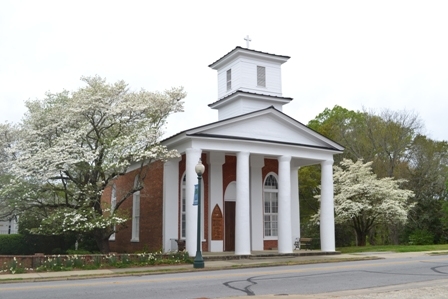
A 1930’s image of the historic Episcopal Church. Image courtesy of the Cooper Photo Collection – 2017

